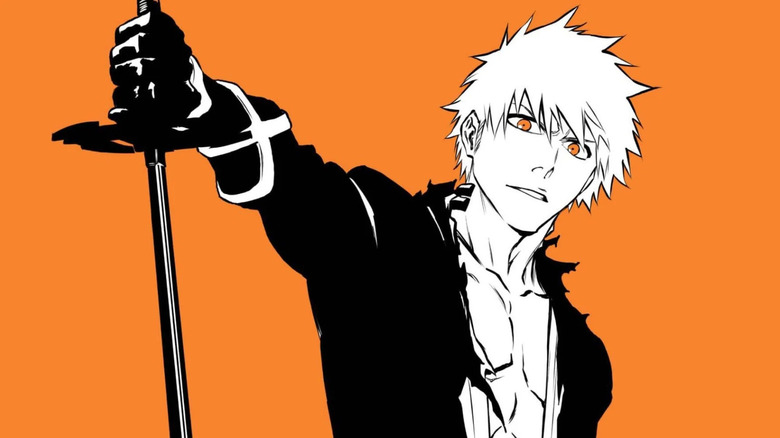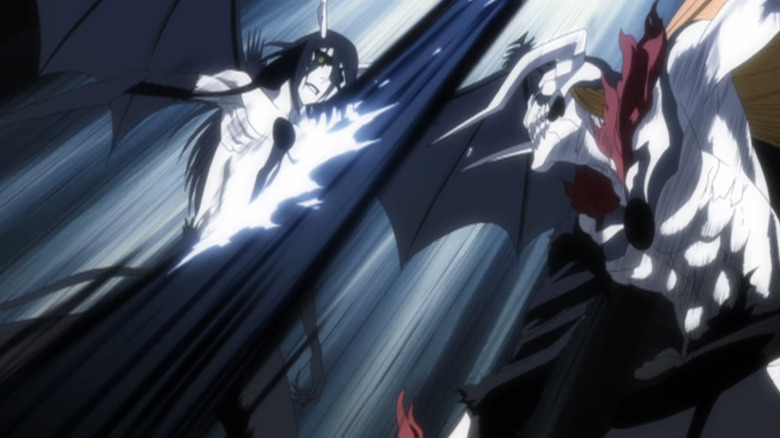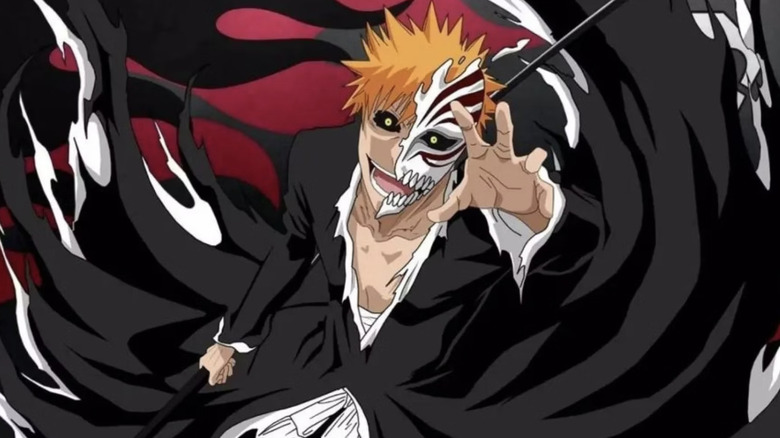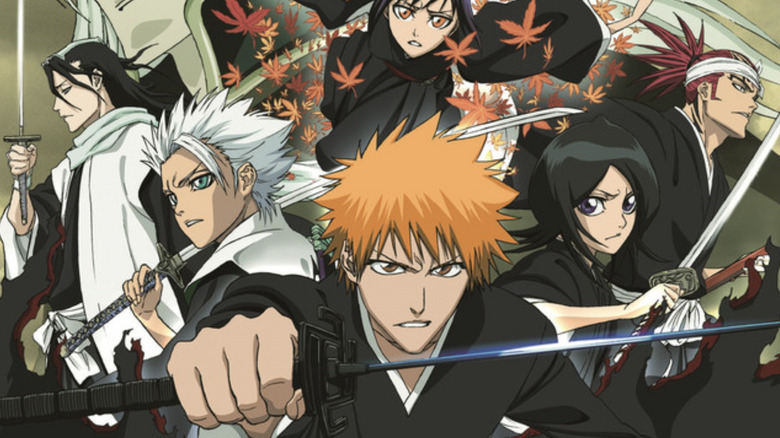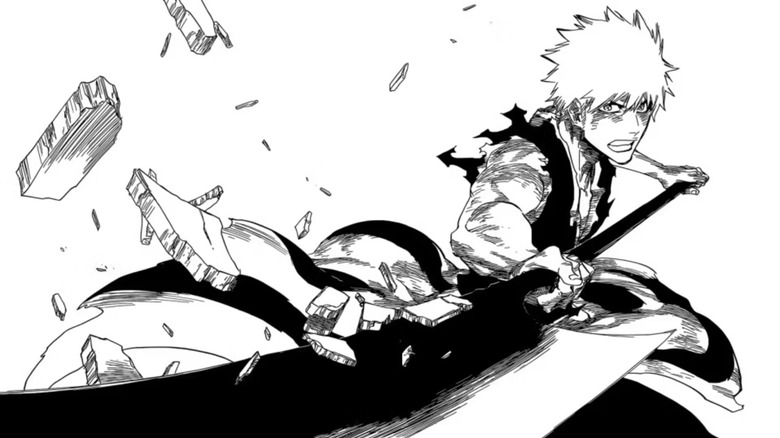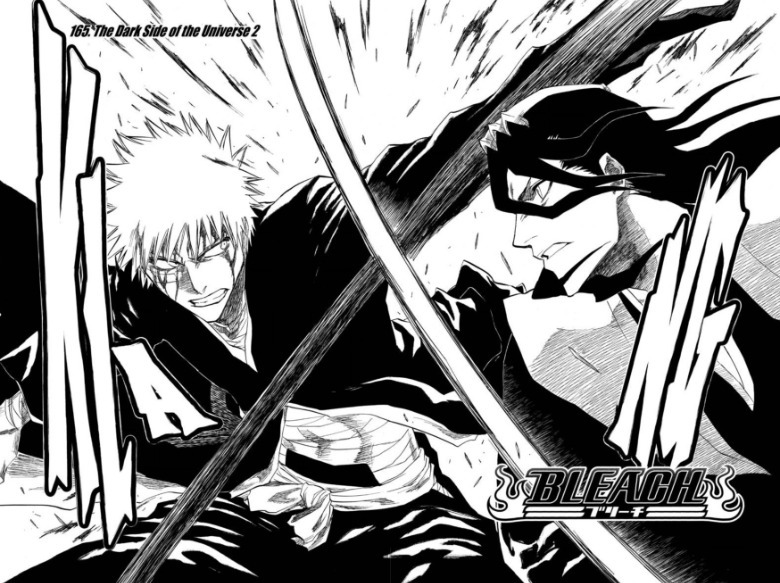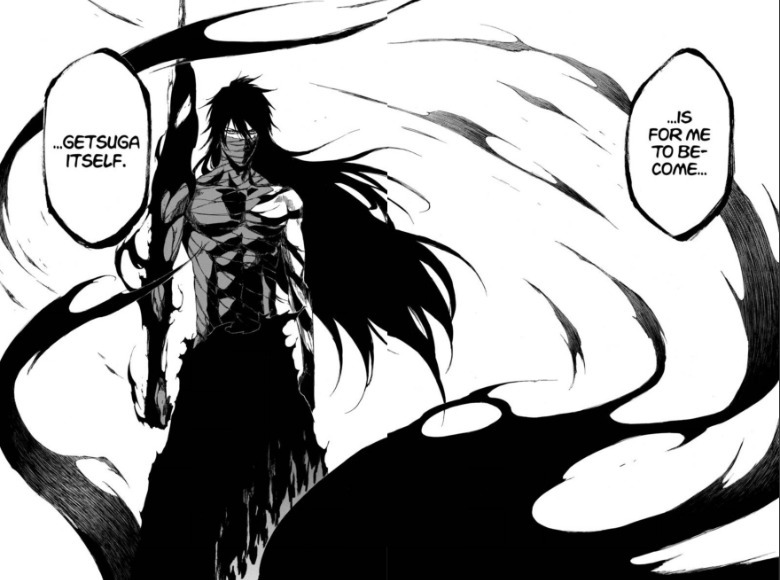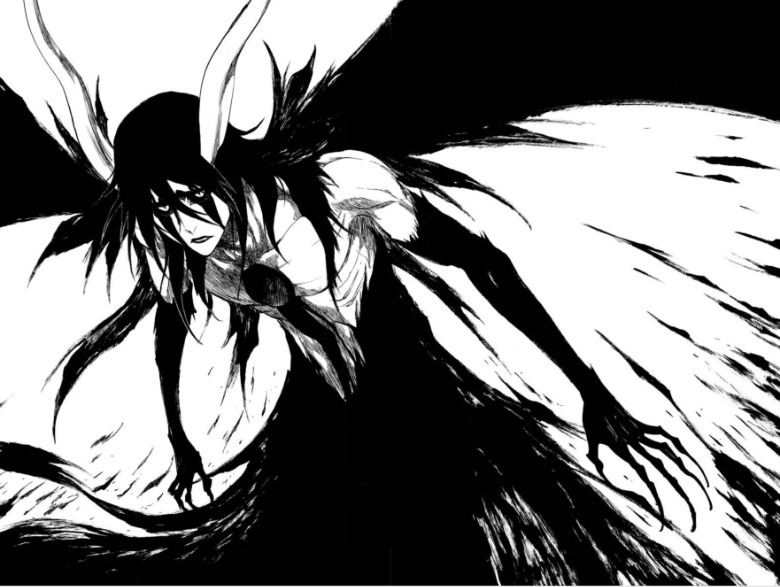The Correct Order To Watch The Bleach Anime Series (Including The Movies)
Tite Kubo's "Bleach" is unquestionably one of the most popular manga/anime of the 2000s. But 700 chapters? 390+ (and counting) episodes? Coming to it late probably sounds like a daunting challenge. Is this all worth the deep dive, especially when you'll get different answers about how well "Bleach" holds up?
"Bleach" stars Ichigo Kurosaki, a Japanese teen living in the average metropolis of Karakura Town. Ichigo has a few things that set him apart from his peers: his (natural) orange hair, his punk attitude, and his ability to see ghosts. One day, he meets Rukia Kikuichi, a "Soul Reaper" who hunts evil spirits ("Hollows"). Injured in a battle, Rukia passes her powers ("Zanpakutō," manifested as a sword) to Ichigo. While Rukia recovers, Ichigo takes up her duties hunting Hollows.
The early set-up of "Bleach" is a "Yu Yu Hakusho" riff — an urban fantasy with a punk protagonist, shinigami girl sidekick, demon villains, etc. Then, the main characters visit Rukia's home: the Soul Society. "Bleach" from there becomes more about the spirit world then the living one, with different Soul Reapers having sword duels and testing their special abilities ("Bankai") in those battles.
Still with me? Here's how to watch "Bleach."
The canon order for the Bleach anime
Based on the manga, there are five main arcs of "Bleach." The first four were adapted during the anime's original run from 2004 to 2012.
-
Substitute Soul Reaper arc (episodes 1-20) — Ichigo balances hunting Hollows with his high school life. This opening arc is much less serialized than the later ones and feels like a superhero show.
-
Soul Society arc (episodes 21-63) — Rukia is taken back to the Soul Society to be executed for giving her powers to a human. Ichigo and his friends mount an invasion to rescue her. This is the definitive "Bleach" arc and sets the narrative trajectory/structure for later arcs. If you don't like "Soul Society," "Bleach" may not be for you.
-
Arrancar/Hueco Mundo arc (episodes 110-167, 190-229, 266-310) — Arrancars, humanoid Hollows with Soul Reaper-like powers, abduct Ichigo's friend Orihime, taking her to their desert dimension Hueco Mundo. Ichigo mounts a rescue. If this sounds similar to the previous arc — you're right, it is. The main difference is that the Soul Reaper captains — antagonists in the Soul Society arc — are now the good guys.
-
Lost Agent arc (episodes 343-366) — After losing his Soul Reaper powers at the end of the "Arrancar" arc, Ichigo meets spiritually-powered humans called Fullbringers, who promise to help restore his powers.
The anime went on hiatus after this while the manga continued for a finale arc, wrapping up in 2016. The anime hiatus ended after 10 years with a new season adapting the last arc, "Bleach: Thousand Year Blood War." The Quincies, the Soul Reapers' ancient enemies, return and lay waste to the Soul Society. To gain the power to stop them, Ichigo has to take a journey within himself.
The season will consist of 52 episodes, divided into four 13-episode long "cours." Cour 1 aired in 2022 and cour 2 in 2023, with the third one coming in October 2024. Based on this, "Bleach: Thousand Year Blood War" will likely be concluding in 2025.
Now, as for what language you should watch "Bleach" in: The English dub is solid (you can't go wrong with Johnny Yong Bosch as Ichigo), but the Japanese setting means the original adds verisimilitude. Your call.
What about Bleach filler?
Now, we arrive at — dun dun dun! — the filler. Like fellow Studio Pierrot production "Naruto," when "Bleach" ran out of manga chapters to adapt, it would create anime original stories to fill the gap. Problem is, the anime had to be ready to resume the canon path once the filler ended, so the arcs couldn't have lasting consequences.
The "Bleach" anime's filler arcs are as follows:
-
Bount arc (episodes 64-109) — The Soul Society fights with creatures called Bounts, essentially vampires that feed on human souls. This arc is generally considered the nadir of "Bleach," so much so that it's even inspired legal testimony.
-
Captain Shusuke Amagai arc (episodes 168-189) — A new captain is named to lead the Soul Reapers' 3rd division, but is all as it seems? This filler disrupts the flow of the Arrancar arc, so I wouldn't recommend watching it in airing/production order.
-
Zanpakutō Rebellion arc (episodes 230-265) — The spirits that reside in the Soul Reapers' swords rebel against their masters. Like the Amagai arc, this one was aired within gaps of the Arrancar arc even though chronologically it can't take place there.
-
Gotei 13 Invading Army arc (Episodes 311-342) — As Ichigo slowly loses his powers, the Soul Reaper captains start mysteriously disappearing. Like the Bount arc, this one is set between two canon arcs.
There are also filler episodes buried within the canon arcs. For instance, episodes 33 and 50 (set during the Soul Society arc) follow supporting characters — like Ichigo's little sisters Karin and Yuzu — taking up his Hollow-fighting duties while he's away. But honestly, this isn't a bad call; the canon material forgets about the human world cast, so these episodes briefly check back in with them.
Episodes 128-137 and 147-149 are filler within the Arrancar arc, but they add more color to the arc's villains and setting than the canon material can fit. The Zanpakutō Rebellion arc adds dimension to Soul Reaper characters' individual relationships with their sword/partner. That's consistently said to be a core part of being a Soul Reaper warrior, but we usually only see Ichigo communing with his Zanpakutō spirit Zangetsu. Episode 342 (which is half-canon, half-filler) has a more emotional goodbye for Ichigo and Rukia than the manga did.
If you want to blaze through the story of "Bleach," then yes, skip the filler episodes. If you like the characters and setting, and so you want to spend more time with them? The fillers have you covered there.
Are the Bleach movies worth watching?
Speaking of — from 2006 to 2010, four movies based on the "Bleach" anime were released. They feature the main characters of the series getting into movie-original situations with new supporting characters and villains that don't carry over. In this way, they're basically 90-minute filler episodes.
The movie don't follow a chronology (one doesn't lead into the other), but they were released in this order:
-
"Bleach: Memories of Nobody" — Ichigo and Rukia encounter an amnesiac Soul Reaper named Senna, while "Blanks" — lost souls stuck between the living world and Soul Society — invade Karakura Town.
-
"Bleach: The DiamondDust Rebellion" — Soul Reaper Captain Tōshirō Hitsugaya leads his squad to recover a stolen artifact.
-
"Bleach: Fade To Black" — Someone erases everyone's memories of Rukia, forcing her and Ichigo to solve this mystery while dodging the amnesiac Soul Reapers.
-
"Bleach: Hell Verse" — Yuzu Kurosaki is kidnapped by Shuren, a lord of Hell, forcing Ichigo and co. to venture into the Hell dimension to rescue her.
The movies don't fit neatly into the series' chronology either. However, they all feature the 13 Soul Reaper Captains as supporting characters and allies of Ichigo. So, it's best to watch them after the Soul Society arc.
2018 saw the release of a live-action "Bleach" movie, loosely adapting the first arc. As of yet, there has not been a sequel nor any plans for one announced. If you're not familiar with "Bleach," the live-action version probably isn't the best place to start.
Why you should read the Bleach manga
You know what is a good place to start with "Bleach," though? Kubo's original manga. You'll lose some of the anime's style with the shift in medium — the most missed will be the music. From the electrifying title sequences to Shiro Sagisu's operatic score to Ichigo's theme "Number One," the sound of the "Bleach" anime carries its vibes.
But the trade off with the manga is some of the best art published in Weekly Shonen Jump. Kubo designs most of his characters across the color spectrum of black and white; Soul Reapers wear black uniforms with white highlights, while Arrancars and Quincies wear white with black detailing. Nothing feels lost with the comic's lack of coloring; instead, Kubo uses the monochrome to add dimension with his shading and hatching. Some particular highlights:
Until "Thousand Year Blood War," the coloring and lighting in the anime is dull, looking much more like "generic anime" than the manga. 70+ volumes/700+ chapters, though? It sounds like a drag, and it can be, but remember: chapters are about 20 pages apiece and many are dialogue-less portions of larger fights. You can breeze through the "Bleach" manga much faster than you can the anime and so better appreciate the action's highs and lows.
The "Bleach" manga is available to read on the Shonen Jump digital reading service and is collected in numerous print volumes.
